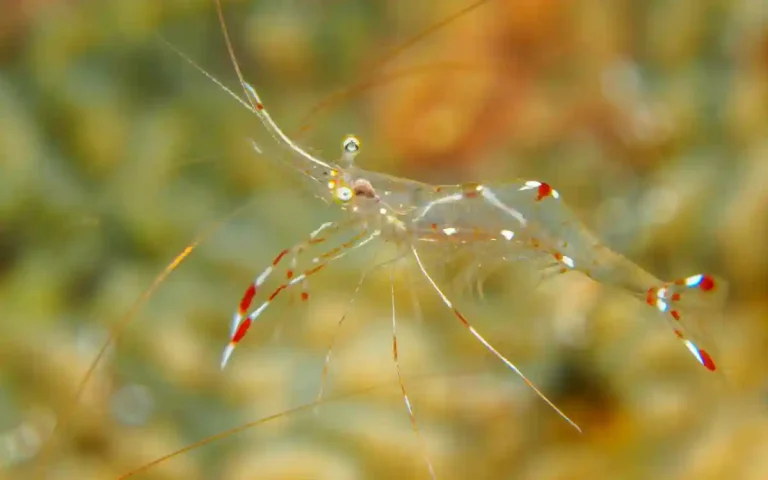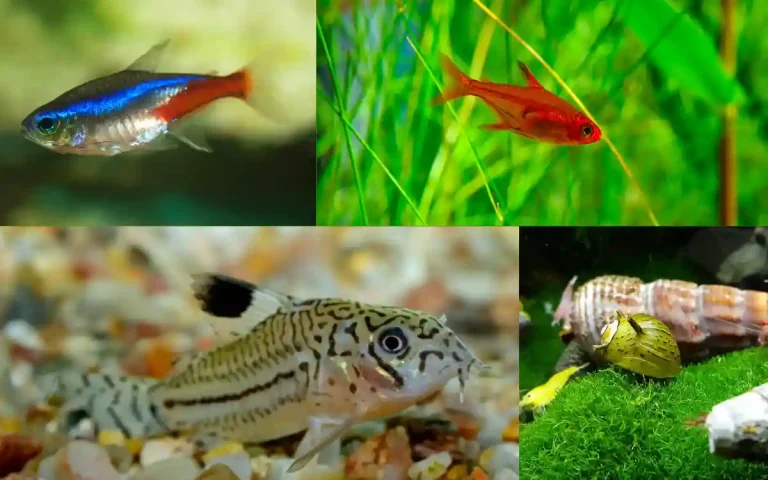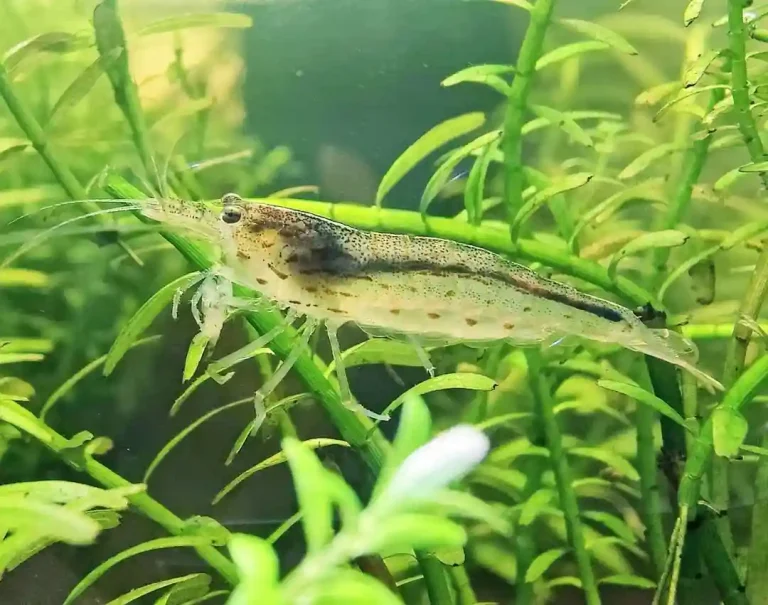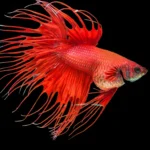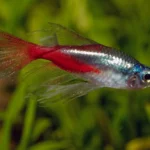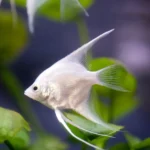Are you trying to choose between Amano and Cherry shrimp for your freshwater aquarium? Both species offer unique benefits, but they serve different purposes and thrive under different conditions.
This comprehensive guide will help you make an informed decision based on your specific tank setup, goals, and experience level.
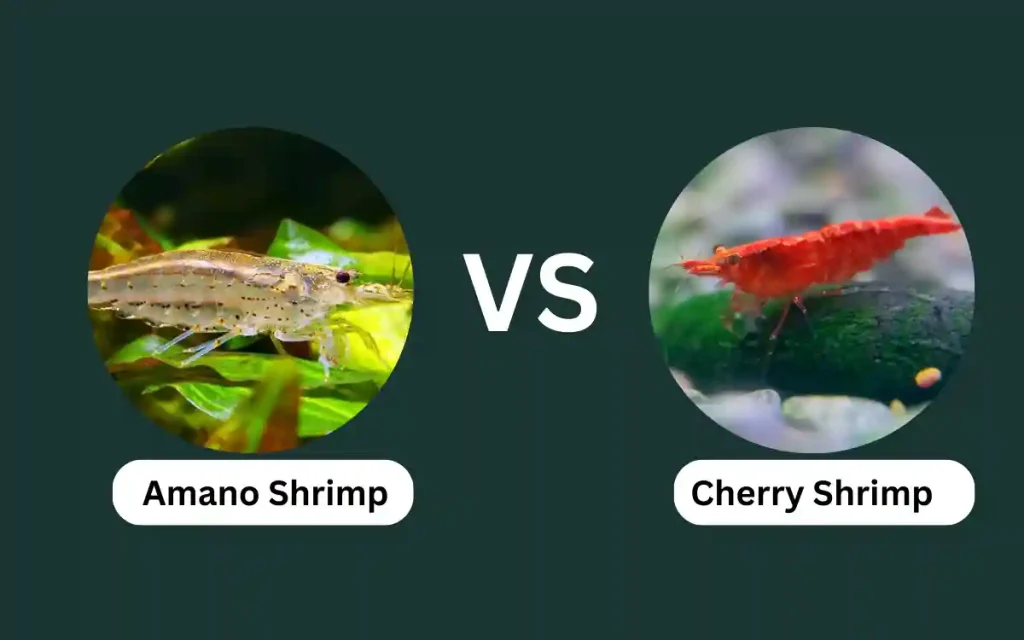
Quick Comparison Table
| Feature | Amano Shrimp | Cherry Shrimp |
| Scientific Name | Caridina multidentata | Neocaridina davidi |
| Size | 1.5-2 inches | 0.5-1 inch |
| Lifespan | 2-3 years | 1-2 years |
| Algae Consumption | Excellent (even tough algae) | Good (soft algae) |
| Breeding Ease | Difficult (requires brackish water) | Very easy in freshwater |
| Price | $3-6 per shrimp | $2-5 per shrimp |
| Minimum Tank Size | 10 gallons | 5 gallons |
| Color Varieties | Transparent/gray | Red, blue, yellow, green, black |
| Hardiness | Very hardy | Moderately hardy |
Amano Shrimp
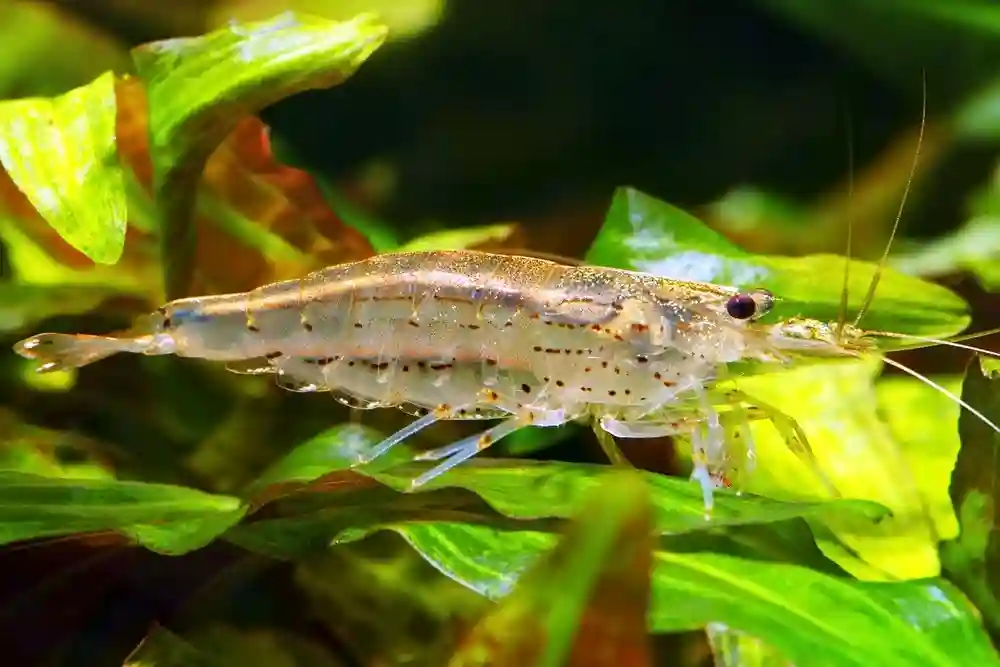
Amano shrimp (Caridina multidentata), named after aquascaping pioneer Takashi Amano, have earned their reputation as the ultimate clean-up crew for freshwater tanks.
Appearance and Size
Amano shrimp grow significantly larger than Cherry shrimp, reaching 1.5-2 inches when fully grown. They have a transparent to grayish body with distinctive dots or dashes running along their sides. While not as colorful as Cherry shrimp, their larger size makes them easier to spot as they work around your tank.
The Ultimate Algae Eaters
What sets Amano shrimp apart is their exceptional appetite for algae. They consume many types of algae that other shrimp and algae eaters might ignore:
- Hair algae
- Brown algae
- Soft green algae
- Brush algae (to some extent)
- Biofilm
A small group of 3-5 Amano shrimp can significantly reduce algae problems in a 20-gallon tank, often eliminating minor algae issues within days.
Behavior and Compatibility
Amano shrimp are active and confident scavengers. They:
- Actively search for food throughout the tank
- Show less hiding behavior than smaller shrimp species
- Work together in groups to tackle larger pieces of food
- Get along well with peaceful fish species
Their larger size makes them less likely to become fish food, allowing them to thrive in community tanks where Cherry shrimp might struggle.
Breeding Challenges
Breeding Amano shrimp in home aquariums is extremely difficult. Their reproductive cycle requires:
- Adults mate in freshwater
- Females release larvae
- Larvae must be transferred to brackish water to survive
- After metamorphosis, juveniles must be gradually reintroduced to freshwater
This complex life cycle makes them nearly impossible to breed without dedicated setups, which is why virtually all Amano shrimp in the hobby are wild-caught.
Cherry Shrimp
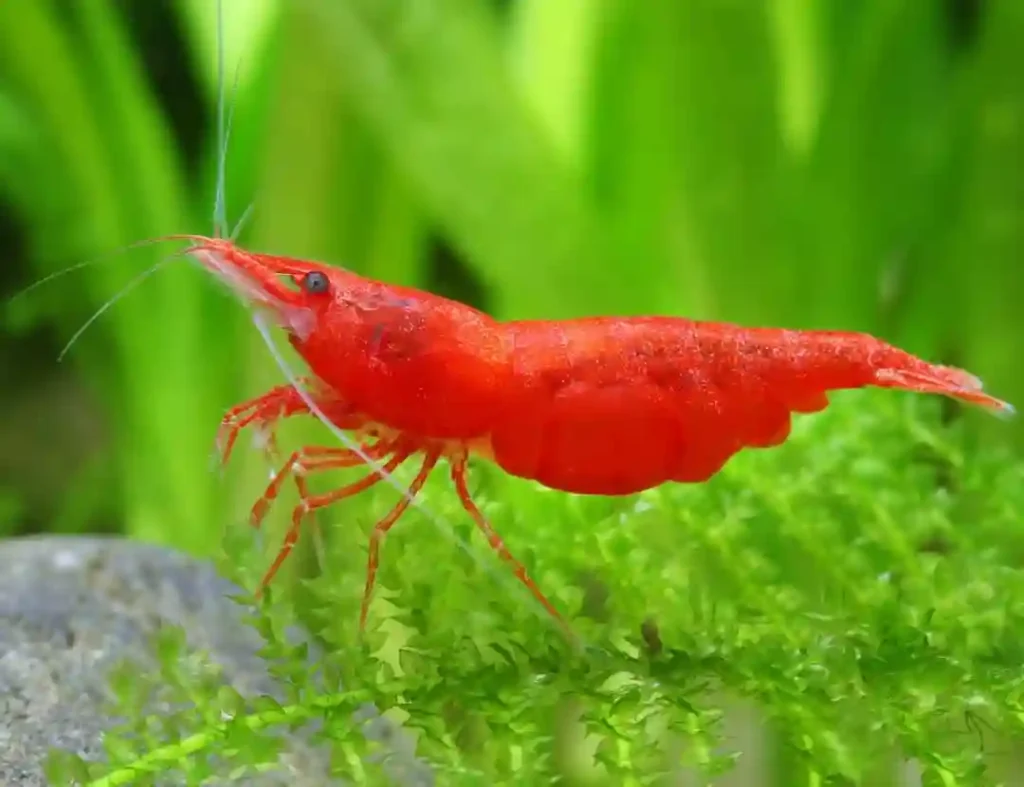
Cherry shrimp (Neocaridina davidi) are the colorful jewels of the freshwater shrimp world, bringing vibrant hues and breeding ease to home aquariums.
Appearance and Color Varieties
The standard Cherry shrimp displays a bright red coloration, but selective breeding has produced numerous color variations:
- Red Cherry (the original)
- Blue Dream/Velvet
- Yellow/Golden
- Green Jade
- Chocolate
- Black Rose/Carbon Rili
- Snowball (white)
Higher-grade specimens show more intense, solid coloration, while lower grades may appear partially transparent with less vibrant colors.
Breeding Success
Cherry shrimp are famous for their ability to reproduce readily in freshwater tanks. Their breeding process is straightforward:
- Females develop a “saddle” (eggs visible through the shell behind the head)
- After mating, eggs move to the underside of the female’s tail
- Females carry eggs for 2-3 weeks, fanning and cleaning them
- Fully-formed miniature shrimp hatch directly (no larval stage)
- Young shrimp immediately fend for themselves
Under good conditions, a small colony can double in size every few months. This makes Cherry shrimp perfect for creating self-sustaining populations.
Algae Control Capabilities
While not as efficient as Amano shrimp for algae control, Cherry shrimp still contribute to tank maintenance by consuming:
- Soft green algae
- Biofilm on surfaces
- Uneaten fish food
- Decaying plant matter
Their smaller size means they need to be kept in larger groups (10+) to have a noticeable impact on algae.
Tank Requirements and Sensitivity
Cherry shrimp can be somewhat more sensitive than Amano shrimp. They thrive best with:
- Stable water parameters (avoid sudden changes)
- Water temperature between 65-78°F
- Neutral to slightly alkaline pH (7.0-7.8)
- Moderate hardness (4-8 dGH)
- Clean water with minimal copper exposure
- Plenty of hiding places (moss, plants, decorations)
Making Your Decision: 6 Key Factors to Consider
1. Your Primary Goal
For algae control: Choose Amano shrimp. Their voracious appetite for various algae types makes them superior tank cleaners.
For breeding and colorful display: Choose Cherry shrimp. Their vibrant colors and ease of breeding make them ideal for shrimp-focused tanks.
2. Your Tank Size and Setup
Smaller tanks (5-10 gallons): Cherry shrimp work better in nano tanks due to their smaller bioload.
Larger community tanks: Amano shrimp can hold their own among larger, more active fish.
Planted tanks: Both species benefit planted aquariums, but Amano shrimp are particularly effective at keeping plants algae-free.
3. Your Tank Mates
If you have fish that might eat shrimp: Amano shrimp’s larger size offers better survival rates with potentially predatory fish like tetras, small gouramis, or peaceful barbs.
If you have only very gentle fish or a shrimp-only tank: Cherry shrimp can thrive and reproduce, creating a constantly evolving colony.
Safe tank mates for both shrimp types include:
- Otocinclus catfish
- Small rasboras
- Endlers livebearers
- Most snail species
- Small corydoras species
For more in-depth details check out this article Cherry Shrimp Tank Mates: 15 Best Friends
4. Water Parameters
If your water tends to fluctuate: Amano shrimp generally tolerate minor water parameter shifts better than Cherry shrimp.
If you have very soft water: Cherry shrimp may struggle with molting. Amano shrimp typically handle lower mineral content better.
5. Your Experience Level
For beginners: Amano shrimp are more forgiving of minor care mistakes and water quality issues.
For intermediate hobbyists: Cherry shrimp offer the reward of breeding success and colony management.
6. Budget Considerations
Initial cost: Both species are similarly priced per individual, but you’ll likely want more Cherry shrimp (10+) to start a colony versus fewer Amano shrimp (3-5) for cleaning duties.
Long-term cost: Cherry shrimp reproduce easily, providing free offspring. Amano shrimp will need replacement as they age, resulting in ongoing costs.
Why Not Both? The Benefits of a Mixed Approach
Many experienced aquarists keep both species in the same tank to maximize benefits:
- Amano shrimp tackle the tougher algae and larger food particles
- Cherry shrimp clean smaller spaces and reproduce to sustain the cleaning crew
- Different sizes allow them to occupy slightly different niches
- Combined, they provide more complete tank maintenance
For a 20-gallon community tank, consider starting with 3-4 Amano shrimp and 10-12 Cherry shrimp for optimal cleaning power and visual interest.
Setting Up the Perfect Shrimp Tank
Regardless of which species you choose, creating the right environment will help your shrimp thrive:
Essential Tank Elements
- Plants: Java moss, guppy grass, and floating plants provide shelter and grazing surfaces
- Hiding places: Ceramic caves, driftwood, and rock formations protect shrimp during molting
- Substrate: Darker substrates help colors pop and make shrimp feel secure
- Water flow: Gentle circulation without strong currents
- Mature tank: Established biofilm provides important food sources
Water Quality Management
- Cycle your tank completely before adding shrimp
- Use a liquid test kit to monitor ammonia, nitrite, and nitrate levels
- Perform regular small water changes (10-20% weekly)
- Use water conditioner that neutralizes heavy metals
- Consider using Indian almond leaves or alder cones to release beneficial tannins
Common Questions About Amano and Cherry Shrimp
How many shrimp do I need to start?
Amano shrimp: 1 per 5 gallons for maintenance (minimum 3 for social behavior) Cherry shrimp: 10+ to establish a breeding colony (at least 8 to ensure both males and females)
Will my shrimp eat live plants?
No, neither species damages healthy plants. They only consume algae growing on plant leaves and occasionally decaying plant matter.
How do I tell male and female shrimp apart?
Amano shrimp: Females are larger with longer dots on their sides; males have more dotted patterns. Cherry shrimp: Females are larger with more intense coloration and a curved underside; males are smaller and less colorful.
What should I feed my shrimp besides algae?
Both species benefit from occasional supplements:
- Blanched vegetables (zucchini, spinach, cucumber)
- Commercial shrimp foods
- Leaf litter (catappa leaves, oak leaves)
- High-quality fish food
How do I acclimate new shrimp properly?
Shrimp are sensitive to sudden water parameter changes. Use the drip acclimation method:
- Float the bag for 15 minutes to equalize temperature
- Transfer shrimp and some bag water to a container
- Set up an airline tube with a knot to create a slow drip from tank to container
- Drip acclimate for 45-60 minutes
- Use a net to transfer shrimp to the tank (discard the water)
Final Thoughts
When deciding between Amano and Cherry shrimp, consider your tank’s specific needs and your personal goals:
Choose Amano shrimp if:
- Algae control is your top priority
- You have a community tank with small, peaceful fish
- You want low-maintenance tank cleaners
- Breeding isn’t important to you
Choose Cherry shrimp if:
- You want to establish a breeding colony
- You prefer colorful, visually striking invertebrates
- You have a species-only or very gentle community tank
- You enjoy watching population dynamics and generational changes
Or take the balanced approach by keeping both species to maximize the benefits they bring to your aquatic ecosystem.
Whether you choose the industrious Amano shrimp, the vibrant Cherry shrimp, or a combination of both, these fascinating invertebrates will add movement, interest, and valuable cleaning services to your freshwater aquarium.

